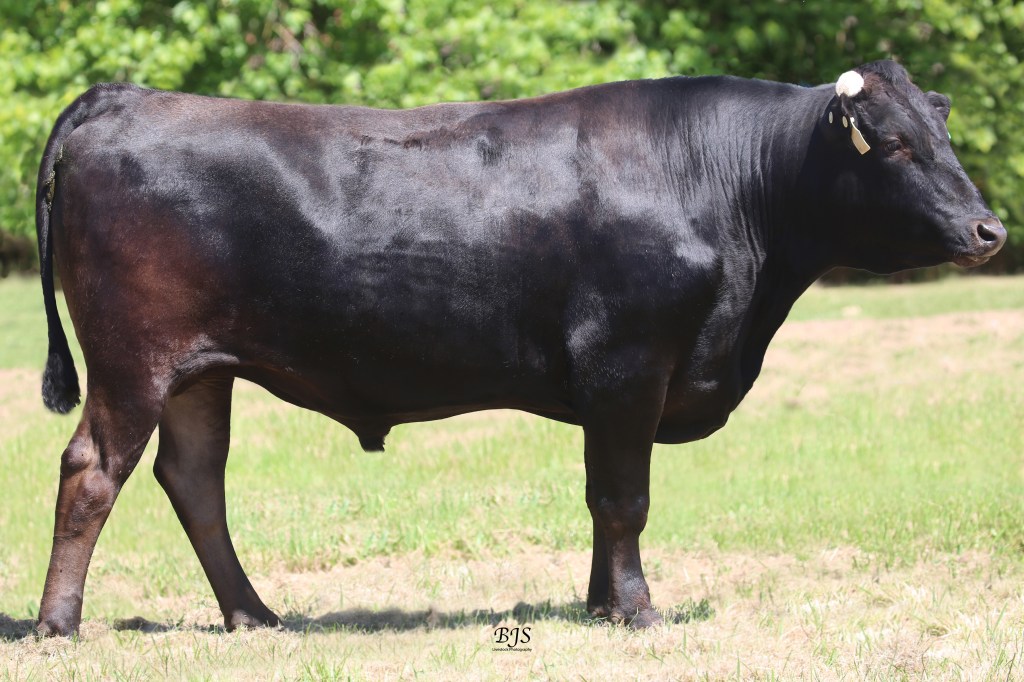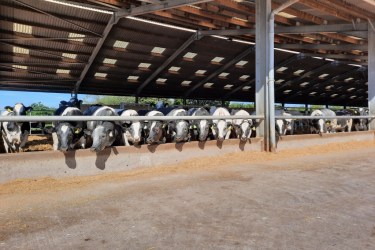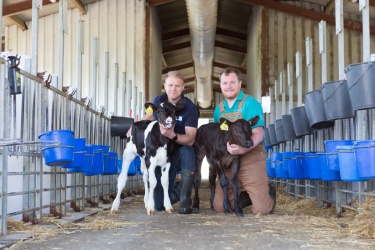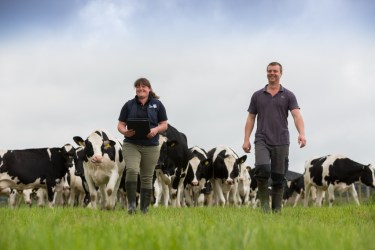An introduction to Wagyu
There’s no doubt that Wagyu beef has exploded onto the scene and taken menus across the globe by storm. But what is it about Wagyu beef that has caused such a stir? Why is it so expensive? And why are so many beef farmers now considering breeding to Wagyu beef?
Wagyu beef cattle originate in Japan. In fact, Wagyu literally translates to Japanese cow. There are four main genotypes: Japanese Black, Japanese Brown, Japanese Shorthorn and Japanese Polled.
Wagyu beef is prized for having a superior flavour and tenderness. The meat has more marbling than other breeds of cattle, giving it a distinctive look and increased firmness. Japanese Wagyu cattle were originally bred as work animals due to robust stature, but this also contributed to their high levels of intramuscular fat. This fat is what gives Wagyu beef its signature marbling and melt-in-the mouth texture. The fat is distributed more evenly throughout the meat, giving it it’s characteristic pink colouring and buttery flavour.
As one of the most expensive meats in the world, Wagyu beef can cost up to $200 per pound, and Wagyu females themselves can sell for up to $30,000. It’s no surprise then that the production of Wagyu beef is tightly regulated in Japan to protect the quality and value.
Wagyu is graded on 2 main factors – how much meat can be yielded and the quality of the marbled fat, or beef marble score. Yield is graded A-C and marbling is graded 1-5, with A5 being the highest quality available. Only A3 to A5 wagyu is certified for sale in Japan. The higher the grade, the higher the price.
How are Wagyu cattle are raised?
The fact that Japanese Wagyu beef has gained a sort of legendary status has meant myths have abounded about Wagyu farms and the way the cattle are treated. There are stories of Wagyu cows receiving daily massages or being fed a diet that includes beer.
The reality is that Japanese Wagyu cows are usually raised by a breeder until about 10 months, then sold at auction. By this time, they can already sell for 40 times the price of other breeds of cattle. They’re then fed a mixture of fibre and high energy concentrate – rice, wheat, and hay – often 3 times a day for 2 years until they’re almost 50% fat.
The growth cycle for Wagyu cattle and feed cost challenges are contributing factors to the high price of Japanese Wagyu beef. Each Wagyu cow will eat around 5 tons of this feed during its lifetime. The goal of this intensive feeding regime is high intramuscular fat – or high marbling within the meat.
A black Angus cow, considered one of the best breeds in the UK and US, would sell for around $3,000. A Wagyu cow would command around $30,000. There are around 300 varieties of Wagyu, and the most notable Wagyu cuts come from 10 regions in Japan.
Types of Wagyu beef
One of the most expensive cuts of Japanese Wagyu beef is Matsusaka Wagyu, from Mie Prefecture. Matsusaka Wagyu is made exclusively from virgin female heifers and is prized for its tenderness. In 2002 one of these cows sold for $400,0001. The highest rated Wagyu beef is an A5 from the Miyazaki region, which can cost up to $100 per pound2.
Kobe beef is amongst the most well-known cuts of Wagyu, originating from Kyoto. This cut of Wagyu is made exclusively from steers or castrated bulls. Though Kobe beef sometimes pops up on restaurant menus in the form of burgers, authentic Kobe beef is too tender to be formed into a burger patty.
A much rarer form of Wagyu is Olive Wagyu. These are cattle raised on pressed olive skins mixed into their feed, and there are only around 2000 of these cows produced each year. They all live on the island of Shudder Shima – home to Japan’s oldest olive oil plantation.
Breeding Wagyu beef in the US
While the popularity of Wagyu is growing worldwide, domestic popularity in Japan has slumped slightly. The value of Japanese exports of Wagyu has risen more than 200% over the past 5 years, but as Japan’s farming population ages, farmers struggle to keep up with the increased global demand, further pushing up prices.
Japan may have some competition. The US, Australia and UK have been working on cross breeding their own Wagyu. Given the strict regulations in Japan around Wagyu cattle and beef, it has taken some time for Wagyu breeding to become a possibility.
The first Wagyu bulls were brought to the US for cross breeding with Angus cattle in 1976. Four Wagyu bulls, two full blood black bulls & two full blood red bulls came from Japan.
In 1997, Japan banned exports of Wagyu cattle. Less than 200 Wagyu cows had been brought into the US by this time.
The American Wagyu Association is currently the fastest growing beef breed association in the U.S. and those that are breeding Wagyu, whether from full bloods or crosses, see their beef graded Prime or above. Today, the AWA estimates that of the 30,000 Wagyu-influenced cattle in United States, only around 5,000 are full blood Wagyu.
Using genomics, US farmers have made huge genetic gains in breeding quality Wagyu cows. Only 3% of US beef grades at a Prime level, and 90% of US Wagyu beef is graded as prime, showing the impact Wagyu breeding can have on meat quality. On top of this, US Wagyu breeders report better feed efficiency and yield grades from their Wagyu cattle.
Breeding high-quality Wagyu in the US has become possible through the use of genomics, increasing the genetic predictability of the breed. With more accurate estimated breeding values (EBVs) to work from, farmers can breed their best cattle to Wagyu with a clearer picture of the outcomes.
Crossbreeding Wagyu beef
The most cost-effective way to begin breeding for Wagyu beef, is through crossbred Wagyu. This is the process of introducing fullblood Wagyu bull semen to a female of another breed.
Crossbreeding Wagyu with other breeds is an effective alternative to fullblood Wagyu breeding. The aim of crossbreeding is to enhance the carcass traits and other desirable traits of Wagyu cattle. Some breeds traditionally used for crossbreeding with Wagyu are Angus, Holstein, and Brahman. Introducing Wagyu genetics into commercial breeds is already proving successful in improving meat quality through that signature Wagyu marbling, as well as increasing the value opportunity of the beef.
Grading crossbred Wagyu
The USDA grades beef in three categories: select, choice and prime, with prime used to describe the highest quality cuts.
It’s the Beef Marbling Score that decides this grade. The marbling is given a score from 0 to 5+. A BMS of 4 or 5 gives it prime status, while 2-3 would be graded choice, and 0-1 would be graded select. 90% of Wagyu beef is graded at prime level, crossbred or otherwise.
On some occasions, crossbred Wagyu may be given the descriptor F1, F2, F3 or F4. This refers to the generation of crossbreeding. In these cases, crossbreeding a fullblood Wagyu sire and the dam of another breed would be given the descriptor F1. This has 50% or higher Wagyu content. As this generation is then bred again, it is referred to as F2. The following generation is F3 and so on.
Pros and cons of Wagyu crossbreeding
Crossbreeding with Wagyu can bring about huge improvements in the attributes of the beef, such as marbling in the first cross. Crossbreeding mitigates health risks associated with purebred cattle. They require fewer treatments and result in a healthier final product. The hybrid vigour assists the carcass weight in remaining high and cattle having better resistance to disease.
Other benefits include the easy calving nature of Wagyu calves, and their temperament. Wagyu are known for their docility and gentle nature. Introducing this through crossbreeding results in a lower stress environment for cattle, which has a positive effect on the final marbling. It’s also important to consider the fact that as the Wagyu content of a crossbreed is increased, the milk production of the cow is slowly reduced.
What’s next?
If you’re looking to begin introducing Wagyu genetics into your herd, Genus ABS can help. After partnering with Wagyu breeders in Australia, Genus ABS now has a world-leading Wagyu program, and are able to offer bull semen from these sires to farmers across the US.
Genus ABS sires are all registered with the American Wagyu Association, with elite characteristics, including marbling, EMA, growth, carcass weight and marbling fineness. Alongside this we can provide you with the data and insight on your herd’s genetic potential.
We can provide you with a fully customized, genomically enhanced mating plan to ensure the best outcomes. By following the plan and breeding your best females with our world leading Wagyu sires you can accelerate genetic improvement through crossbreeding.






